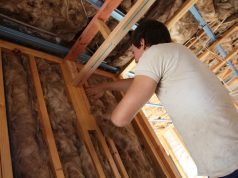Mistakes happen, regardless of how skilled, experienced, or cautious a person is. Human error, according to the UK’s Health and Safety Executive (HSE), is one of the most common but costly causes of accidents, failures, and safety incidents. This is also applicable in high-risk, high-safety environments, such as industrial cleaning.
Whether in pharmaceutical manufacturing or food and beverage production, even minor mistakes in cleaning processes can contaminate the product, damage the equipment, or, worse, violate regulatory standards.
However, human error is rarely caused by carelessness or incompetence; rather, it is the result of unclear procedures, poor system design, or overwhelming work conditions. This is why, in addition to understanding the mistake, you must also understand what caused it. Here are 4 ways to understand a reduce human error in your industrial cleaning processes.
1. Implement Cleaning-in-Place (CIP) Systems
One of the most effective ways to reduce human errors in industrial cleaning is to implement systems and services that minimise human involvement. Your setup can make use of clean-in-place devices, which are specifically designed to thoroughly clean your industrial equipment. CIP systems can be tailored to your equipment type while still meeting regulatory requirements.
These automatic systems ensure that pipes, tanks, process lines, vessels, and vats are thoroughly cleaned and sanitised. You can choose from different types of CIP systems, including total loss, single-use recirculation, reuse (recovery), multi-channel, and fixed or mobile systems.
Instead of depending on time-consuming manual scrubbing and cleaning methods that require disassembly, it’s better to contact reliable CIP cleaning services in the UK for better hygiene and efficiency.
CIP systems offer multiple benefits:
- Consistent cleaning: Cycles are automated, which ensures your industrial equipment follows the same protocol for consistent cleaning and outcomes
- Reduced operator handling: You lower the risk from incorrect chemical dosing, temperature settings, or cleaning and wash durations.
- Time-saving: No need to dismantle equipment. Minimise any downtime.
- Meeting compliance requirements: Choose validated CIP systems for hygiene-critical industries like pharmaceutical, food processing, and dairy.
2. Set Clear SOPs for Cleaning and Sanitising
Consistent results in industrial cleaning are possible by following detailed and stringent standardised operating procedures (SOPs) for cleaning and sanitising, also known as Sanitation Standard Operating Procedures (SSOPs).
Most industrial units already have cleaning SOPs in place, but they need to be designed in a way that removes any confusion and is easy to understand for every staff member to follow. You can create an SOP with visual supports for better retention and higher compliance rates when compared to text-only SOPs.
Here are some ways SOPs can help reduce errors:
- Clear and specific guidance: Your team will stay focused on the specifics while reducing any confusion or guesswork on chemical concentrations, contact times, and other variables.
- Multi-lingual versions: Support the needs of your diverse team by creating multi-lingual versions of the SOP document. It can lower confusion and misunderstandings due to language differences.
- Task checklists: Operators can tick off and verify completion of tasks according to the SOPs, which can also serve as a record for audits.
3. Integrate Digital Monitoring and Verification
Lack of visibility and oversight can lead to errors. To circumvent this, your facility needs digital monitoring and verification. This refers to using technology to track, measure, and confirm whether cleaning tasks have been completed correctly and consistently as per protocol. It also flags when something is amiss or a problem occurs.
Conventional methods like manual logs and human observations are prone to generating errors and are not as efficient and reliable as digital tools that use automation to collect and validate cleaning data. Digital monitoring and verification uses:
- Sensors: Track dosing, flow rates, and temperature in real-time through sensor technology.
- Digital dashboards: To alert managers of incomplete cleaning cycles
- Barcode/QR code check-ins: Barcode or QR code helps in verifying that cleaning is for the correct machinery or zone. It can also verify if all the cleaning steps have been followed.
- Automated logs: Be audit-ready with automated logs to comply with GMP or ISO 22000 environments.
4. Deliver Role-Specific Training and Competency Testing
Many industrial facilities employ basic training, which can leave room for a lot of confusion and a lack of clarity. Upgrade your training modules to bring in targeted and role-specific training that is not only effective in reducing errors but also in following cleaning protocols to the tee. Here are some role-based training strategies to employ:
- Hands-on, practical training: Combine classroom training with supervised sessions in the facility or real-life simulations.
- Competency tests: Keep a check on how well your team knows about the cleaning, safety and hygiene protocols.
- Continuous improvement: Encourage your team to report inefficiencies in processes or any unsafe practices that violate safety, without any fear of backlash.
- Micro-learning access: Create short, mobile-accessible training lessons for time-bound shift workers or teams in high-turnover environments.
To Sum Up
To err is human, but failing to create strategies that account for human error is a risk that’s avoidable. Instead of placing the blame on an individual, your unit needs to focus on introducing CIP systems, digital monitoring processes, updated sanitary protocols, and role-specific training along with a culture that supports human performance.
Ultimately, eliminating human errors is not about working towards perfection; it’s about building an industrial environment that supports human limitations and works with them and not against them.














